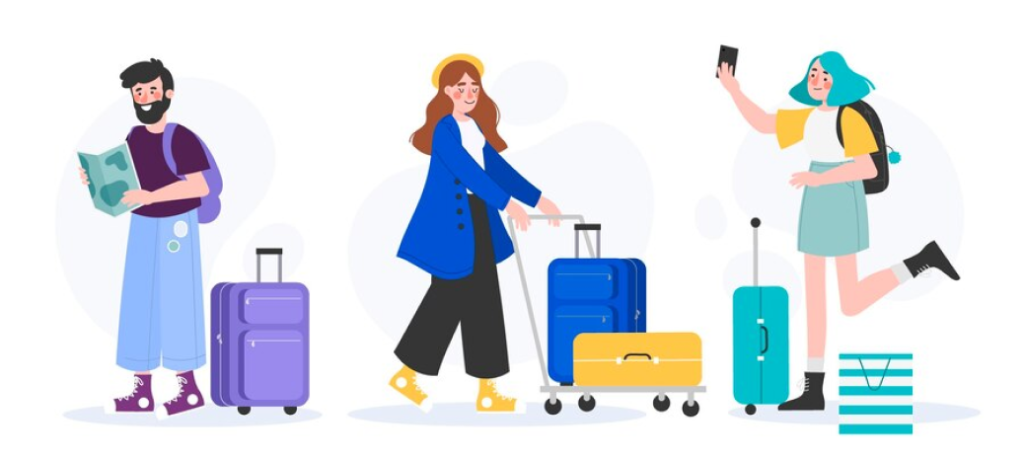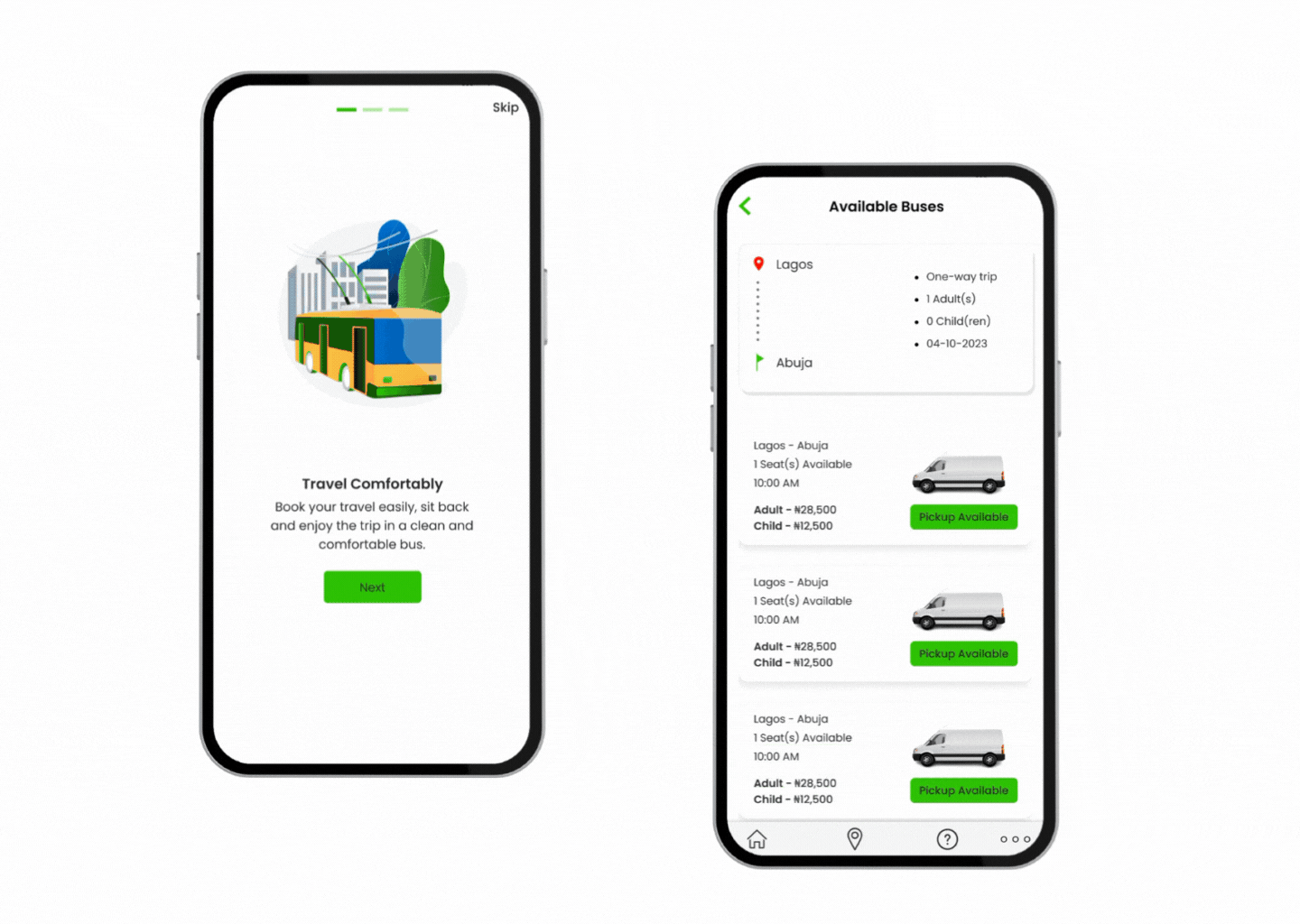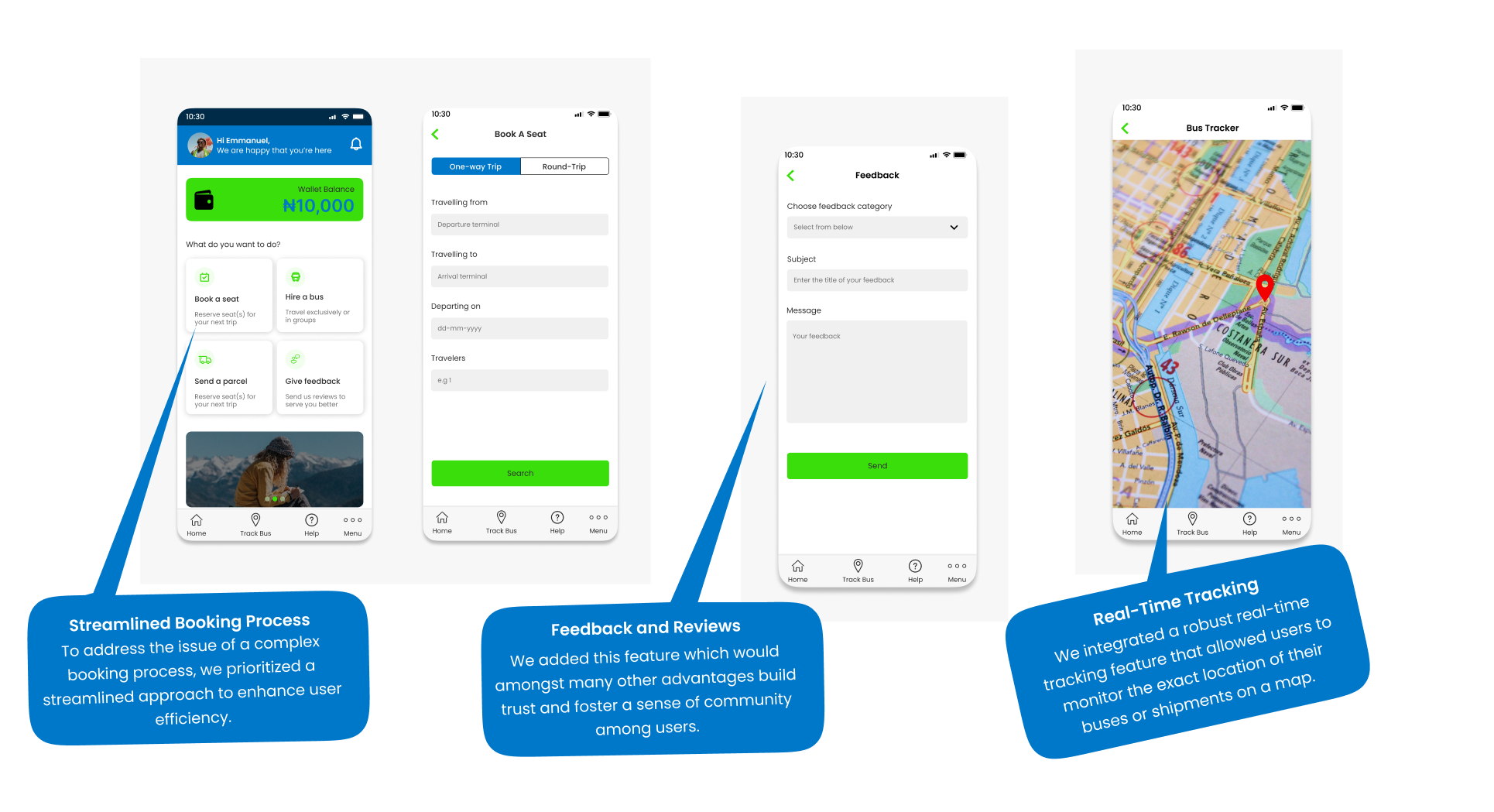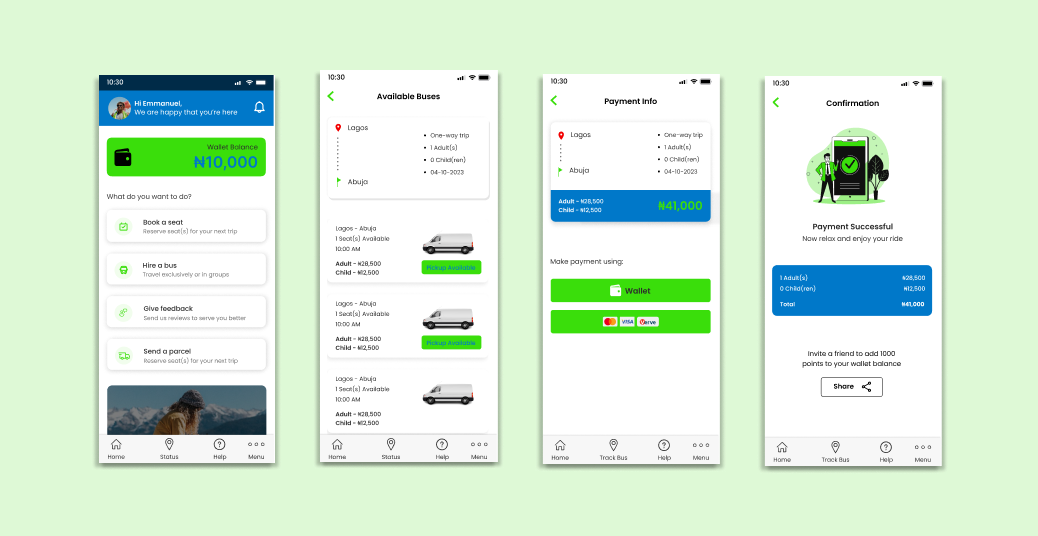TravelEasy Express App
Design
TravelEasy Express App Design
Timeline
- 6 weeks
My Role
- UX Designer
Tools
- FIgma. Photoshop, Illustrator
Overview
TravelEasy Express is a visionary project that seeks to transform the landscape of inter-state travel and logistics in Nigeria. This case study unveils the journey undertaken to conceptualize, design, and refine TravelEasy Express—a user-centric digital platform poised to redefine convenience, reliability, and transparency in the industry.
Defining the Problem
People traveling between states and businesses shipping goods in Nigeria face many problems. They have to wait in long lines, be unsure about schedules, and often deal with paperwork. They can’t easily track where their bus or shipment is. TravelEasy Express aims to understand and solve these challenges to make travel and shipping in Nigeria more convenient and reliable.

The Hypothesis
I had a theory: By creating a user-friendly digital platform, we could improve travel and logistics. So, I crafted a hypothesis:
“By creating a user-friendly digital platform for inter-state travel and freight logistics in Nigeria, we can significantly improve the convenience and reliability of these services. We expect to increase user satisfaction, reduce wait times, and enhance transparency. This will transform the inter-state travel and logistics landscape in Nigeria.”
The Goal
The goal was clear:
“To develop and launch a user-centric digital platform that revolutionizes the inter-state travel and freight logistics experience in Nigeria. To create a convenient, reliable, and transparent solution that simplifies booking, offers real-time tracking, and meets the needs of both passengers and logistics businesses”.
Research and Empathy
To understand the users better, interviews, surveys, and on-site observations were conducted. I started by talking to people, real folks like you and me. I interviewed 15 passengers and surveyed 150 people, including business owners and non-business owners who came to transport their goods as parcels. I even spent time at bus terminals and logistics companies to see things up close.

Here’s what I found:
I also conducted a thorough competitive analysis, identifying three main rivals, scrutinizing their app features, user feedback, and pricing models. This analysis revealed opportunities for TravelEasy Express to stand out by addressing common issues and adding unique features. Drawing from these insights, I formulated hypotheses regarding areas where improvements are warranted and identified potential features that could be seamlessly integrated to enrich the user experience.

Key Features
In the development of TravelEasy Express, I prioritized several critical features and design choices that directly addressed the core problems faced by users in the inter-state travel and logistics landscape in Nigeria. These prioritized elements were chosen based on their potential to significantly enhance user experience and resolve key pain points:
Designing the solution
On kicking off this project, I ensured that I followed the design thinking process, including Empathize, Define, Ideate, Prototype, and Test phases. So far, I had empathized with the users and defined the problem. I had carried out research and understood the users – I even created user personas to make the users seem real to me so as to get a better understanding of who they were.
From my findings, I proceeded to generate creative solutions or ideas to solve the problem. I considered various approaches to addressing user needs. I crafted design solutions focusing on user-friendly booking, real-time tracking, transparent pricing, secure payments, user profiles, customer support, business accounts, notifications, accessibility, data privacy, and offline booking. These features formed the foundation of TravelEasy Express.
Digital Wireframes
With a map in hand and ideas swirling, I began to sketch the future. Brainstorming sessions brought forth innovative solutions. From my sketches, I quickly mocked up some basic digital wireframes to gather feedback from some users and other engineers on the overall layout and structure of the solution.
Hi Fidelity Prototypes
Testing and Learning
Usability testing was a cornerstone of the design process for TravelEasy Express. I conducted both in-person and remote usability testing sessions with representative users, including passengers and logistics managers to see how easy the designs were and also to validate whether the designs would solve their problems. During these sessions, users were given specific tasks to perform within the platform. I observed their interactions, collected feedback, and tracked their success rates and completion times. In addition, I created variations of certain design elements or features and randomly assigned users to interact with either version. This allowed us to compare the performance of different design choices and make data-driven decisions.
Key Feedback and Insights
Final Designs

Results and Impact
While TravelEasy Express has not yet been launched, our project has already yielded significant results and made a substantial impact in several key areas.
- Feedback from users highlighted increased satisfaction with the platform’s ease of use and intuitiveness.
- Users expressed a preference for the streamlined booking process and found real-time tracking more informative.
- Our project embodies a user-centered design approach, putting the needs and preferences of passengers and logistics businesses at the forefront.
- TravelEasy Express is well-prepared for implementation. The robust design, tested features, and user-centricity lay a strong foundation for a successful launch.
- The emphasis on user-centricity is poised to give TravelEasy Express a competitive edge in the inter-state travel and logistics market in Nigeria.
- Understanding user needs and continually improving the platform positions it as a service tailored to the local audience.
Lessons Learned
The TravelEasy Express project provided me with valuable insights and lessons that have enriched my understanding of UX design and project management. Here are the key lessons learned:
- Prioritizing user needs and preferences is at the core of successful design.
- Understanding our users’ pain points and designing solutions around them is paramount.
- Iteration Leads to Improvement. Continually seeking feedback and making incremental improvements can lead to significant enhancements.
- Flexibility is key when dealing with complex projects. The ability to adapt to changing requirements and unforeseen challenges is critical for success.
- Effective collaboration among team members, stakeholders, and users is vital. Clear and open communication ensures everyone is aligned with project goals.
Conclusion
In summary, this case study highlights our journey to address the challenges in inter-state travel and logistics in Nigeria. The problem of complexity, uncertainty, and limited options was tackled through user-centered design and the creation of high-fidelity prototypes. If this is implemeted, TravelEasy Express will now offer convenience, transparency, and reliability to users, with a focus on usability, aesthetics, and inclusivity. The TravelEasy Express project is a testament to the power of design thinking and the vision for a more effortless and efficient future in travel and logistics.









